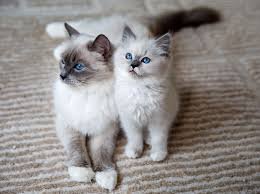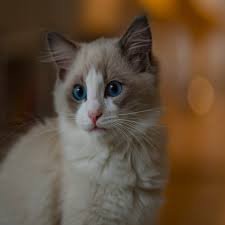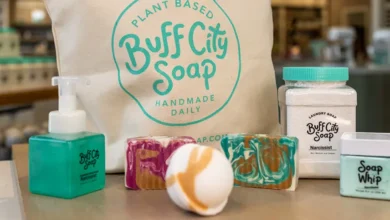Ragdoll Kitten: The Ultimate Guide to the Most Laid-Back Feline

If you’ve ever dreamed of a kitten that melts in your arms like a plush toy, then the Ragdoll kitten might just be your perfect match. These adorable, blue-eyed fluffballs are famous for their calm personalities, affectionate nature, and soft, silky coats. But there’s so much more to a Ragdoll than just its cuddly charm. Whether you’re a first-time pet parent or a seasoned cat lover, this guide will help you understand everything there is to know about Ragdoll kittens—from their history and personality to care tips and fun facts.
Origins of the Ragdoll Breed

The Ragdoll breed has a surprisingly mysterious and somewhat dramatic origin story. It all began in the 1960s in California with a woman named Ann Baker. She owned a white domestic long-haired cat named Josephine, who had a particularly gentle nature. After Josephine gave birth to a few unusually calm and affectionate kittens, Ann selectively bred them to continue those ideal traits.
What made the Ragdoll breed stand out was how these kittens would go completely limp when picked up—just like a ragdoll. That unique trait became the inspiration for their name. Over time, their popularity grew across the United States and eventually spread to cat lovers around the globe.
Though the breed’s exact genetic makeup was kept somewhat secret by Ann Baker at the time, what’s clear today is that Ragdolls were carefully bred for their distinct personalities and stunning looks. And those efforts definitely paid off.
Personality and Temperament: Why Ragdoll Kittens Are So Special
Ragdoll kittens are often called “puppy-like” because they’re incredibly social, friendly, and even follow their humans around the house. Unlike many other breeds, Ragdolls crave attention and thrive on human interaction. You won’t find them hiding under the bed all day—they’ll likely be curled up next to you, flopping into your lap the moment you sit down.
Another lovable trait is their tolerance. Ragdoll kittens are known for being especially gentle with children and tolerant of handling. That makes them an ideal pet for families, even those with younger kids. They usually don’t mind being picked up, cradled, or even dressed up (within reason, of course).
Despite their laid-back demeanor, Ragdoll kittens can also be quite playful. They love interactive toys, feather wands, and even games of fetch. This balanced mix of calm affection and playful energy makes them a joy to raise.
Physical Appearance: Blue Eyes and Velvet Fur
One of the most striking features of a Ragdoll kitten is its bright blue eyes. Big, round, and expressive, their eyes are like little sapphire gems that add to their overall adorable appeal. But that’s just the beginning of what makes them so beautiful.
Ragdolls have medium-to-long coats that are soft and silky to the touch, almost like rabbit fur. Unlike many other long-haired breeds, their fur doesn’t mat easily, which is a huge plus when it comes to grooming.
They also come in a variety of patterns and colors. The most common patterns are:
- Colorpoint: Darker colors on the ears, face, paws, and tail.
- Mitted: Similar to Colorpoint but with white “mittens” on the paws.
- Bicolor: White inverted V-shape on the face, with white on the belly and legs.
Color-wise, you’ll find Ragdolls in shades like seal, blue, chocolate, lilac, cream, and more. Fun fact: Ragdoll kittens are actually born all white, and their color patterns develop as they grow older—usually over the first few weeks and months.
Ragdoll Kitten Care: Tips for a Happy, Healthy Life
Caring for a Ragdoll kitten isn’t overly complicated, but there are a few things to keep in mind to ensure they thrive.
1. Nutrition Matters
Because they grow into large cats (males can reach up to 20 pounds!), proper nutrition during kittenhood is essential. Look for high-quality kitten food with a good balance of protein, fat, and essential nutrients. Some Ragdolls may be prone to obesity, so portion control is key.
2. Grooming
While their coats are relatively low-maintenance compared to other long-haired breeds, you should still brush your Ragdoll kitten once or twice a week. This keeps their coat shiny and removes loose hair. Bonus: most Ragdolls actually enjoy being brushed—it feels like a bonding session!
3. Veterinary Care
Regular vet visits are important, especially during the kitten stage. Ragdolls should get all their core vaccinations, flea prevention, and regular check-ups to rule out any health issues.
4. Play and Enrichment
Don’t let their calm demeanor fool you—Ragdoll kittens need mental stimulation and exercise. Interactive toys, climbing trees, and puzzle feeders are great ways to keep them happy and healthy.
Socializing and Training Your Ragdoll Kitten
One of the easiest breeds to train and socialize, Ragdoll kittens pick up on household rules pretty quickly. They’re intelligent and love to please, making them excellent candidates for simple tricks or litter box training.
Start socializing them young by gently introducing them to different sounds, people, and household routines. Ragdolls generally adapt well to changes, but early exposure helps them become even more confident adults.
Training a Ragdoll kitten can also be fun! Some owners teach their Ragdolls to come when called, use a scratching post instead of furniture, or even walk on a leash. Clicker training works well, especially with food rewards (just don’t overdo the treats).
Common Health Concerns and What to Watch Out For
Like all breeds, Ragdolls have a few genetic health conditions to be aware of. The most common include:
- Hypertrophic Cardiomyopathy (HCM): A form of heart disease that can be hereditary.
- Polycystic Kidney Disease (PKD): Though less common in Ragdolls, it’s something to monitor.
- Bladder Stones or Urinary Issues: Especially in males, so hydration and diet matter.
Responsible breeders screen their cats for these conditions, so it’s important to choose your Ragdoll kitten from a reputable source. Also, regular check-ups and maintaining a healthy lifestyle can go a long way in preventing issues.
Is a Ragdoll Kitten Right for You?
Ragdoll kittens are ideal for people who want a companion—not just a pet. They’re loyal, affectionate, and tend to form strong bonds with their humans. If you spend a lot of time at home or work remotely, a Ragdoll will be your constant cuddly shadow.
That said, they don’t do well when left alone for long periods. If you’re away a lot, consider getting two kittens so they can keep each other company. Also, while Ragdolls are known for being docile, they still need love, attention, and playtime to live their best lives.
Final Thoughts
Bringing a Ragdoll kitten into your life is like adding a little bundle of calm, fluff, and joy to your home. They’re more than just pretty faces—they’re intelligent, sweet, and full of personality. From their soft coats to their relaxed temperaments, Ragdoll kittens are the ultimate lap companions for anyone looking for a loving feline friend.
So, if you’re ready for endless cuddles, playful pounces, and a whole lot of love, a Ragdoll kitten might just be your perfect



